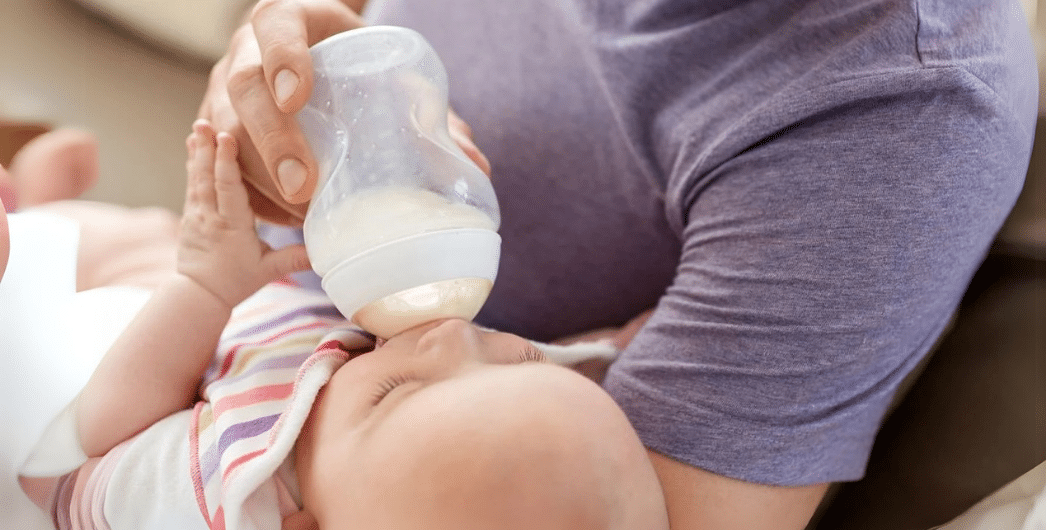Best Non-Toxic Baby Bottles to Keep Your Baby Safe
Baby bottles (a baby registry mainstay), once predominantly plastic, have undergone a major shift. With concerns about BPA, phthalates, and microplastics, today’s parents are seeking safer alternatives—and the market is finally delivering.
Who remembers only drinking from plastic bottles as a child? 🙋♂️
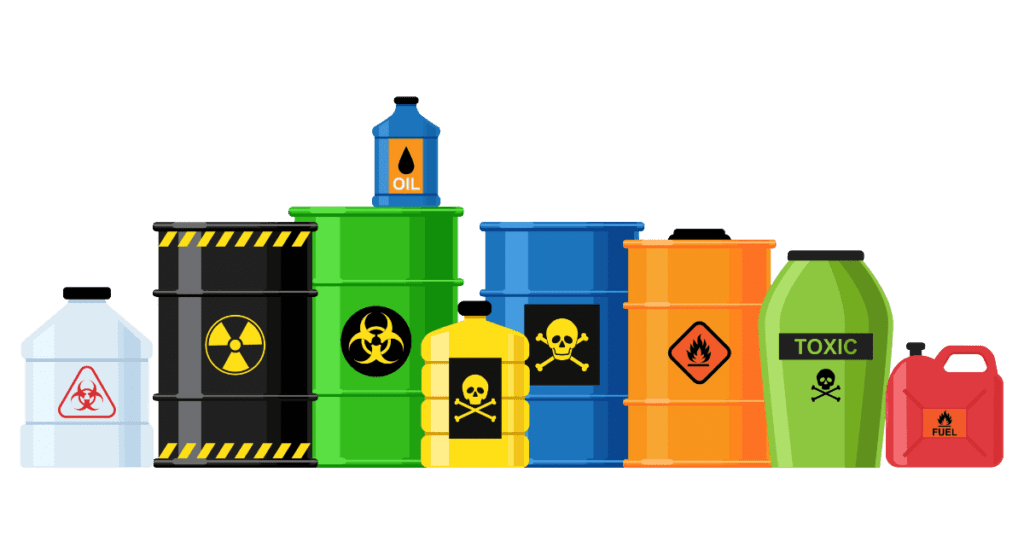
Manufacturers that once exclusively made plastic bottles now offer non-toxic options made from materials like stainless steel, silicone, and glass. Each of these comes with its own benefits and trade-offs, but they all aim to reduce chemical exposure for your little one.
What Makes a Baby Bottle “Non-Toxic”?
When we say “non-toxic,” we mean bottles that are free from harmful substances like BPA, PVC, lead, and phthalates. But it goes deeper than just being “BPA-free.” Some plastics still leach chemicals when exposed to heat or fat (like breastmilk), even if they’re marketed as safe. That’s why more parents are turning to these three alternative materials:

1. Stainless Steel
Stainless steel is extremely durable, won’t shatter, and doesn’t leach chemicals—even when heated. It’s ideal for travel and active lifestyles, and many bottles come with insulation to keep milk warm.
2. Glass
Glass has long been trusted for its purity. It’s completely non-reactive, meaning it won’t absorb flavors or odors, and it’s easy to clean. The main drawback? It’s breakable, though many bottles now come with silicone sleeves for protection.
3. Silicone
Silicone is a flexible, soft, and lightweight alternative that’s generally considered safe. However, it’s not entirely non-toxic. Over time and especially with exposure to fat or heat, silicone can release compounds called siloxanes. While food-grade silicone is widely used, it’s not as inert as glass or steel.
Our Favorite Non-Toxic Baby Bottles (By Material)
Let’s look at some of the best-reviewed, parent-approved options for each material type:
Stainless Steel Baby Bottles
🍼 Lifefactory Stainless Steel Vacuum-Insulated Bottle
Pros:
- Double-walled vacuum insulation keeps liquids warm or cold
- Wide neck design makes it easy to clean and fill
- Comes with a protective silicone sleeve
- Dishwasher safe (top rack)
Cons:
- Slightly heavier than plastic or silicone bottles
- More expensive upfront
- Limited availability of replacement parts
🍼 Pura Kiki Stainless Steel Infant Bottle

Pros:
- 100% plastic-free—including the lid and collar
- Compatible with various nipples from other brands
- Durable and lightweight
- Grows with your child: converts to sippy, straw, or sports bottle
Cons:
- Not insulated (liquids cool down faster)
- Some parents find the flow too fast for newborns
- Stainless steel dents easily if dropped
Silicone Baby Bottles
While silicone is generally safe, it’s worth noting that studies suggest it may release siloxane compounds over time—especially when heated or in contact with fatty liquids like breast milk. If you use silicone bottles, avoid heating milk in them and monitor for wear and tear.
We’ve included silicone in this non-toxic baby bottle list because the general recommendation is that it is safe and inert, but still you should (as with everything) use with caution.
🍼 Boon NURSH Reusable Silicone Bottle

Pros:
- Collapsible pouch reduces air intake and gas
- Made from food-grade silicone, free of BPA, PVC, and phthalates
- Easy to assemble and clean
- Mimics breastfeeding with natural shape
Cons:
- Silicone can absorb odors over time
- Requires careful cleaning to prevent mold in crevices
- Not compatible with bottle warmers due to collapsible design
🍼 Comotomo Natural Feel Silicone Bottle
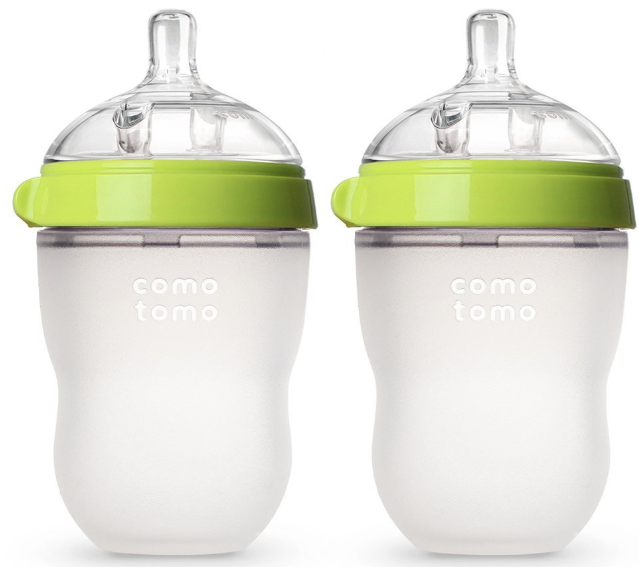
Pros:
- Very soft and squeezable—great for babies transitioning from breast
- Wide-neck design for easy cleaning
- Dual anti-colic vents reduce gas and fussiness
Cons:
- Silicone can absorb odors over time
- May leak if over-tightened
- Some parents report nipples collapse during feeding
- Not ideal for warming milk directly in the bottle
Glass Baby Bottles
Dishwasher safe, doesn’t stain or retain smells, glass allows you to see the contents of the bottle easily, however, it is heavy and breakable.
🍼 Dr. Brown’s Natural Flow Wide-Neck Glass Bottles
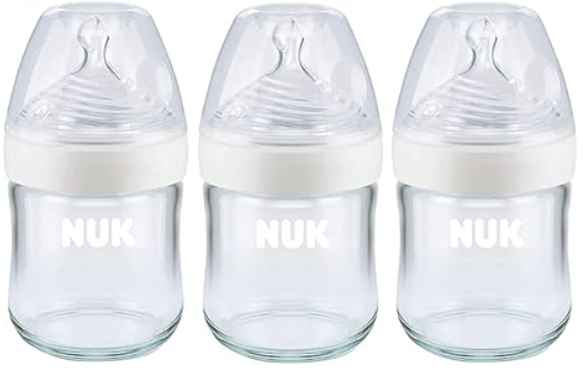
Pros:
- Made from high-quality borosilicate glass (thermal shock resistant)
- Includes anti-colic vent system to reduce spit-up
Cons:
- More parts to clean due to vent system
- Silicone sleeve sold separately
🍼 NUK Simply Natural Glass Bottles
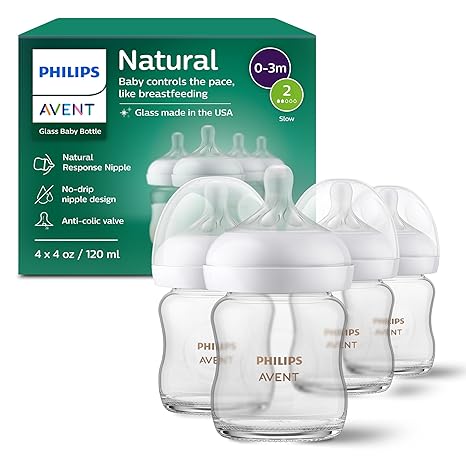
Pros:
- Soft nipple with multiple holes for natural feel
- Slim glass design is easy to hold
- Compatible with many breast pumps
Cons:
- Some parents report the nipples collapse during feeding
- Basic design lacks insulation or grip features
Verdict: The Best Non-toxic Bottle?
Your choice will ultimately come down to your baby’s feeding preferences (some are fussy about the bottle!), and your personal comfort level with each material. If you’re looking for:
- Maximum purity → Go with glass.
- Durability and temperature control → Choose stainless steel.
- Softness and flexibility → Try silicone, but use with care.
Whichever you pick, steering away from traditional plastic bottles is a meaningful step toward a healthier, low-tox baby routine. You’re doing a great job simply by being informed—and your baby will thank you (eventually).
Let us know your thoughts in the comments!

